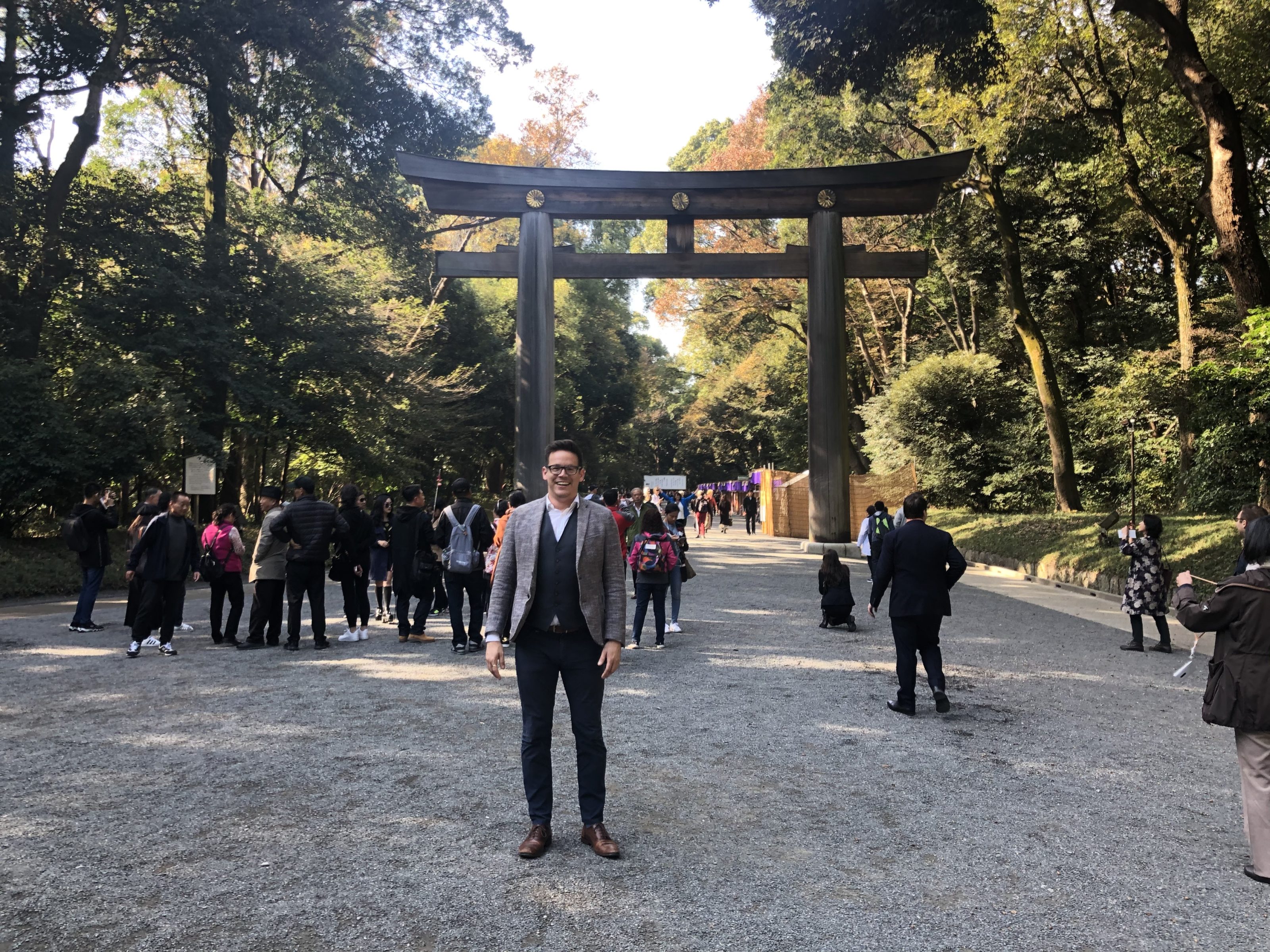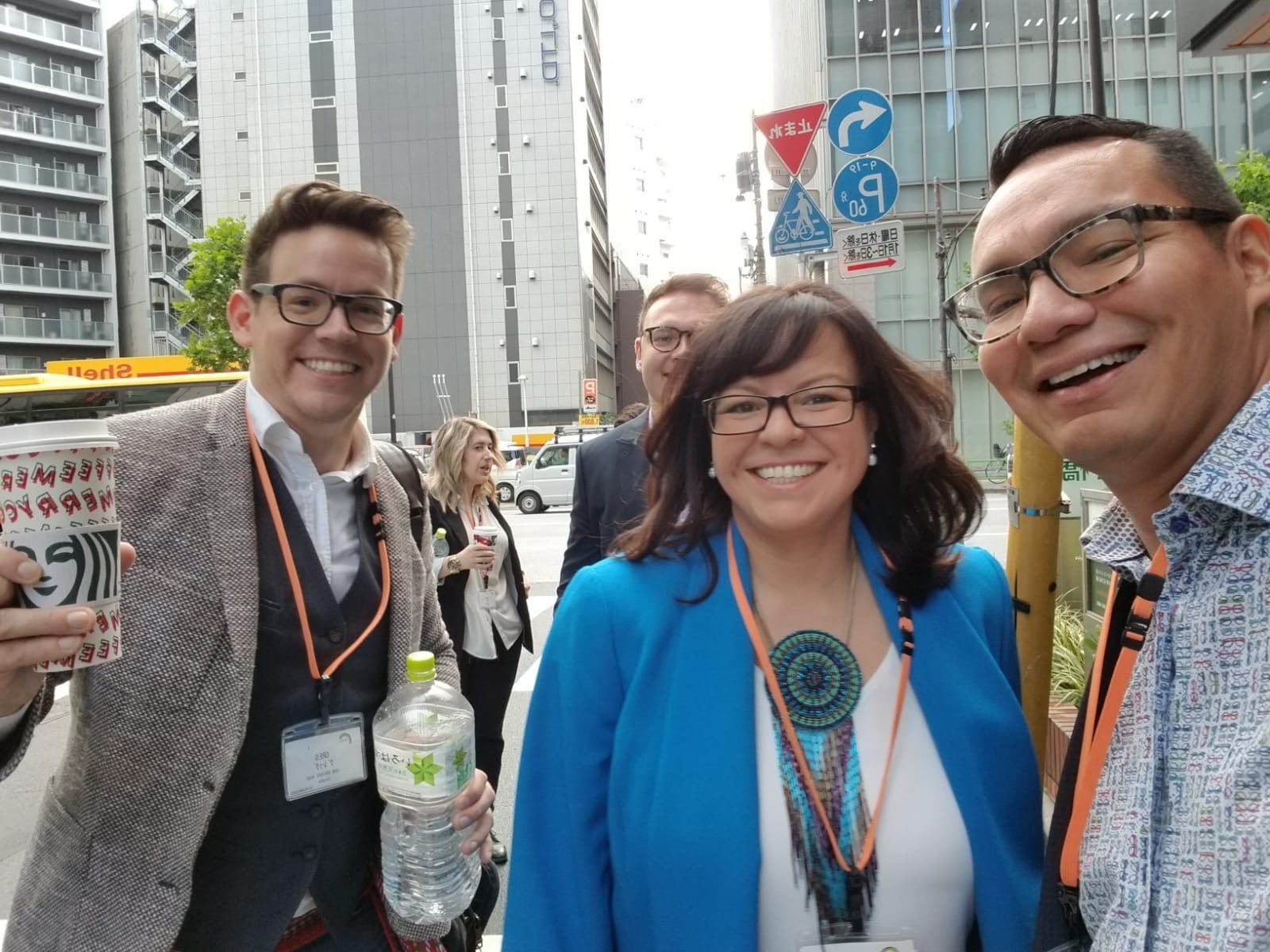In November, I was one of four Indigenous leaders who participated in a trade mission to Japan to promote the benefits of Canadian energy, and to explain how the country is making progress on natural resource development that benefits everyone.
We were invited because Japan, which is energy poor, is looking for new sources of supply. Unlike Canada, Japan produces only 9.6 per cent of its energy — and spends much of its wealth importing liquefied natural gas from Australia, Indonesia and Qatar, and oil from Saudi Arabia, Russia and the UAE.
Japan sees Canada as a like-minded energy partner that offers political stability, strong business, human rights and environmental standards.
“Canada is the global leader in clean oil and gas extraction and having access to clean and sustainable energy is one of Japan’s energy priorities,” said Shigenobu Kobayashi, Japan’s Consul General to Calgary prior to the mission to Japan.
The trade mission was organized by the Asia Pacific Foundation of Canada and Japan’s Ministry of Foreign Affairs, and its purpose was to share insights into working with Indigenous people in Canada to help get our energy to the Japanese market.
So how do you explain the complexities of Canada’s Indigenous peoples and their views on energy infrastructure projects to some of Japan’s highest-ranking business and government leaders?
Our message was simple: Natural resource development – in fact, all business development – must include Indigenous people, our businesses and our culture – and we’re making progress toward that goal in Canada.
Over the course of eight days, we had meetings with the CEOs of Japan’s 10 largest companies, including Toyota, world-class steel producer Nippon Steel and one of the world’s largest LNG shipping companies, Mitsui O.S.K. Lines, as well as senior government officials, local prefectural governors and chambers of commerce.
Our group was made up of Chief Sharleen Gale from Fort Nelson First Nation in B.C., Steve Saddleback from Samson Cree Nation in Alberta, Kayla Stephenson from Curve Lake First Nation in Ontario and me, a member of the Metis Nation of Alberta. During our meetings, we talked about the types of energy projects that our communities support, gave an update on our pipeline challenges, and shared our perspective on why some communities are opposed to some projects.

Projects that get Indigenous support have a few things in common, we told them: they are proposed by companies that get to know communities over a long period of time; project proponents respect Indigenous people and their land; and the projects offer opportunities to put Indigenous people to work.
A recipe for failure with Canada’s Indigenous communities, we warned them, is to look at communities as secondary stakeholders.
We also shared that Indigenous communities bring a lot to the table, given our relationship to the land. We understand places to avoid because of cultural sensitivity, the land’s geotechnical aspects, and how to best treat plants and animals because many rely on them for food and medicine.
I stressed that more and more Indigenous people in Canada see energy infrastructure as an unparalleled economic opportunity, one in which communities are looking to own, operate and build large projects, such as the TransMountain Pipeline and Expansion project and the proposed Eagle Spirit Energy Corridor.
The highlight of our eight days in Japan was a brief interaction I had with Yasushi Aoki, the managing executive director of Nippon Steel. Aoki said he had been unaware of what it takes to work with Indigenous peoples in Canada and committed to developing a deeper understanding as his company moves forward an iron ore project in Ontario.
Like the other business leaders, Aoki had many questions about the TransMountain pipeline expansion and LNG Canada’s Coastal GasLink pipeline project. Japanese business is looking to provide steel for pipelines for current and future projects.
According to Japan’s Foreign Affairs Ministry, more than 800 Japanese companies now have operations in Canada and the country has long had an operating interest in Canadian energy. It has held ownership in the oil sands since 1978 through JACOS (Japan-Canada Oil Sands), helped pioneer Steam Assisted Gravity Drainage (SAGD) technology in the 1990s, and more recently has partnered as a 15 per cent owner of LNG Canada.
Aoki said he was encouraged by the advancement of Indigenous participation in energy infrastructure projects, as Japan is not only looking to Canada to supply energy for its electricity generation, but also to fuel industry.
The country remains fearful of energy poverty since the 2011 Fukushima Daiichi nuclear disaster, after which the country’s entire nuclear power system was shut down in response to societal pressures and fears around further disasters. The shutdown of the country’s 53 nuclear power plants left a significant electricity generation deficit, with Japanese domestic energy production falling from over 20 per cent to just 9 per cent since the nuclear shutdown. Since 2011, the additional cost of importing energy has cost upwards of an additional US$30 billion a year, fueling ballooning debt – US$10.5 trillion – and making Japan the world’s most indebted country relative to their GDP.
“There is no one solution that will address this serious issue, but increasing our energy security and diversification will help,” Mio Otashiro, deputy director of the Second North America Division, said in an interview during our mission.

I learned a great deal during our eight days in Japan. Our economies are complementary and provide both Canada and Japan an opportunity to become economically stronger together. Our relationship could also help address climate change challenges. Japan sees Canada’s energy as a way to help achieve its Paris agreement targets, largely by reducing the travel time of imported energy and associated emissions. Energy imports from the Middle East take between 20 and 25 days to travel from the Strait of Hormuz to Japan, while it takes only 10 to 12 days for a trip from Canada.
Cleaner-burning Canadian LNG could also replace coal, which has been filling the gap left by the nuclear shutdown. Japan’s current plan includes building up to 30 new coal power plants to replace older coal plants, but also to expand coal electricity generation capacity by 20GW in the next decade.
Japan believes that Canadian energy import would vastly improve the carbon efficiency of the full cycle “well-to-wheels” carbon intensity of domestic energy consumption, which takes into consideration the transportation of product from the originating wellhead to point of consumption.
The leaders we met with said our environmental regulations and requirements are something to be proud of and recognized by the world.
I was moved by the respect they showed for our Indigenous cultural knowledge, their pride in their own culture and willingness to share it with us, and the desire they expressed to access Canadian energy to improve their economic and environmental circumstances.
Gregory John works in Indigenous content and communications at the Canadian Energy Centre and has spent his career working with Indigenous communities in energy for upstream and midstream companies. He has had the opportunity to work on some of Canada’s most important energy projects and is an advocate for Indigenous equity ownership of energy infrastructure. John is a citizen of the Métis Nation of Alberta.
